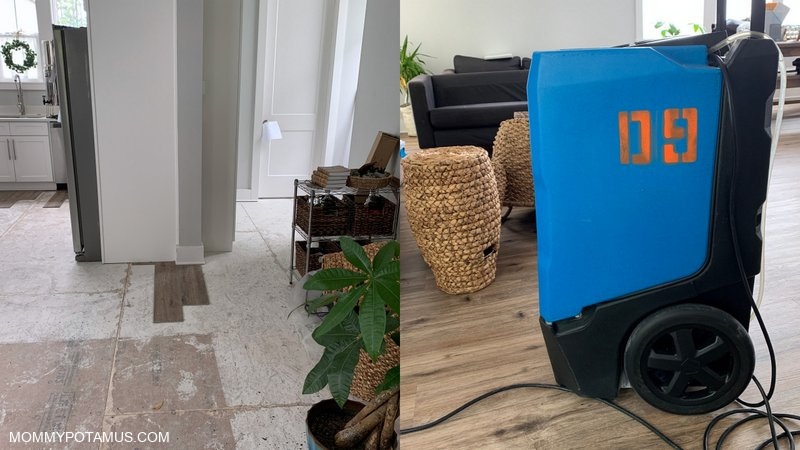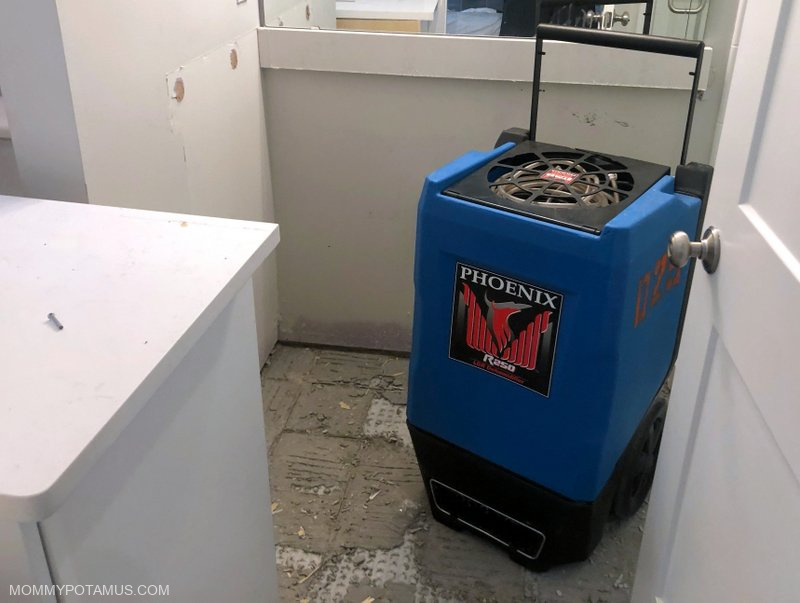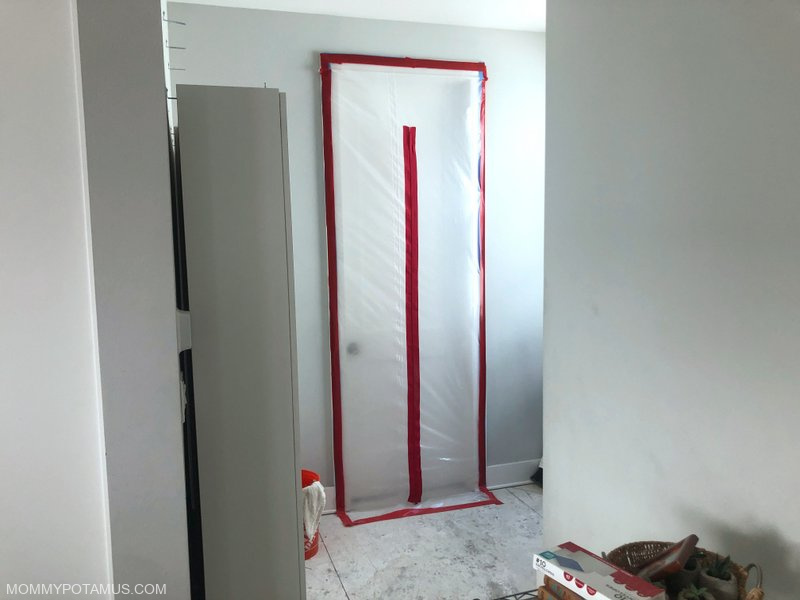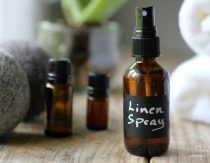
One year ago, I woke up at 3am with water pouring through a light fixture onto my face. Seconds later, my husband and I ran upstairs to find water gushing through every light fixture onto our furniture and beloved belongings.
We ran up one more level – where we live average-size homes are often three floors due to smaller lot sizes – to find it underwater, too. There we discovered and shut off the source of the flood, which was in a bathroom.
Turning off the water, of course, was the beginning of a long process, not the end.
As someone whose Lyme symptoms were seriously exacerbated by previous mold exposure, this situation was so incredibly stressful for me.
I didn’t know what to do first. I didn’t know who to call. I worried that mold growth was somehow inevitable with a flood as massive as ours, and that our home would never again be the safe haven it had been up to that point.
Fortunately, on the one year anniversary of the flood – literally on the exact same day – I had an expert mold assessor come out and run some tests. He found that not only had we avoided mold growth after the flood, our indoor air quality is actually BETTER than before.
Getting from there to here was not an easy process. I talked with a lot of experts who had conflicting opinions and recommendations. I hope you never find yourself in a similar situation, but just in case it might be helpful to you or someone you know, I thought I’d share what I wish I’d known at the beginning.
Before we dive in, one quick disclaimer: I’ve worked incredibly hard to heal from exposure to a water damaged building that developed mold. My goal in writing this article is to share insights from experts that helped me keep my indoor environment healthy after water damage.
That said, I am not an expert on this subject and these are my opinions, not expert advice. If you have an active water damage or mold situation, please seek the advice of a certified professional.
#1 – The Magic Phrase is “Emergency Water Damage Restoration”
On the morning of the flood, after my entire family bailed countless bucketfuls of water and used every towel, shirt and sock we own to mop up what we could, I started trying to figure out who to call for help. I started by googling “mold restoration company,” but mold is not an emergency in the same way that a flood is, so those guys don’t answer the phone at 4am.
Eventually I figured out that the magic phrase was “emergency water damage restoration” plus my town name, and by sunrise a restoration tech was installing dehumidifiers throughout the house while taking moisture readings in various walls and floors.
Now, I got lucky. Not all water damage restoration companies are equal and its generally a good idea to at least read some reviews before contacting one, but at 4am I had one option so that’s what I went with. The guys turned out to be great, so even when the initial situation was under control and we had a chance to talk to a few other companies to discuss different approaches, we decided to go with the first crew.

#2 – The Type of Water Matters . . . A Lot
Though they’re experts at what they do, water damage restoration companies don’t provide every service that may be needed after a flood. That’s why over the next few days, I scheduled countless conversations with experts from all across the country, trying to figure out how to properly deal with the situation and hopefully prevent mold growth.
One of the most helpful people I spoke with was Ken Larsen, CR WLS FLS CLS CMP CSDS, who is an IICRC approved instructor that literally wrote a book on structural restorative drying. In other words, he’s the guy who teaches the protocols for water damage and mold remediation that are used in the field.
During that conversation, I realized I had no idea what kind of water had flooded our home. Here were the possibilities:
- Category 1 – Clean water with no immediate health risks
- Category 2 – Gray water with possible health risks due to chemical or biological contamination
- Category 3 – Black water, aka soil or sewage water which presents a definite health risk due to the presence of microbes, including bacteria, mold, and viruses
To find out, we hired one of Ken’s companies to perform water category testing, which determines both the origin of the water and whether contamination has occurred via contact with building materials.
Ours came back as Category 1, aka fresh water. (Phew!) This allowed us to safely dry out some materials (including drywall) that would have needed to be removed completely if the test had come back with a Category 2 or 3 result.
We did still have to remove all of our flooring and parts of different walls, but overall we were able to salvage a lot . . . including many of our belongings, which I am very grateful for.
#3 – Get Air Quality Samples
According to the EPA, mold can start to develop within a couple of days after a flood if things remain wet. (1) Often it can’t be seen visually – at least not at first – and we may not be able to detect it with a “sniff test,” either.
Although our team started drying out our home within hours of the flood, it was still wet at the 48 hour mark and beyond, so I wanted to get a baseline air quality sample as soon as possible. That way we’d have a rough idea of what our air quality was like before any microbial growth had a chance to start growing.
After a lot of calls I finally found an industrial hygienist that could come quickly to take air quality samples and a few surface swabs. Though the title “industrial hygienist” sounds like something related to factories, it actually describes an expert that is trained to do a couple of important things:
- Identify health and safety concerns related to buildings (both industrial and residential)
- Create a plan for addressing any issues that are found
Industrial hygienists create plans for remediation companies to follow, but they don’t do the work or receive compensation based on the cost of a remediation project. I like that approach because it ensures that their recommendations are not influenced by potential profits.
Our first samples came back great, which was great news.
Once the home drying process was complete, we asked the the industrial hygienist to come back and take follow-up samples. We wanted to know that no mold had formed and that there were no hidden issues we needed to address before starting repairs – putting floors back in, repairing walls, etc.
Once again they came back great, so we were able to confidently move forward with repairs.

#4 – There Are Different Approaches To Remediation
One thing I mentioned at the beginning of this article is that I received a lot of different opinions on how to deal with a flood like ours. All the people I spoke with were experts, so it was up to me to take their advice and go with what made the most sense to me.
Ultimately, we took the least invasive approach that was offered to us – opting to safely dry out as much as possible while testing strategically to make sure we didn’t miss anything. I think there are situations where a more aggressive approach would be best, but I trusted the advice of team I hand-selected to work with.
Simple Ways To Encourage A Healthy Indoor Environment
During the drying and reconstruction process, I asked a lot of questions about how to maintain a healthy environment after my team went home. We live in a coastal town in Florida, which is beautiful and sunshiney and HUMID.
Though our home is relatively new and didn’t have any air quality issues before the flood, in high humidity environments things can pop up unexpectedly. I wanted to maintain the healthy indoor environment I’d worked so hard to preserve, so I took several steps based on my team’s suggestions.
Here are their top recommendations:
Install Humidity Monitors
Many mold experts recommend keeping home humidity levels below 55% in order to discourage growth. Part of an air conditioning units job is to remove excess humidity from the air, so if it’s running optimally it may reduce air moisture to the target range.
However, not all air conditioning units are efficient, and summers here are extremely humid. That’s why, on the recommendation of my team, I bought these battery-operated humidity monitors and placed them in areas that typically have higher moisture levels – our bathrooms, laundry room and kitchen.
They didn’t recommend that monitor specifically, but I did have them check it’s accuracy by taking professional readings in the same room it was monitoring. The monitor I bought and the professional monitor showed the same humidity percentage, so I think it’s pretty accurate.
Consider Installing A Dehumidifier
During the summer months our humidity levels go up significantly, so I strategically placed a few inexpensive dehumidifiers in rooms that had the highest readings.
With the help of our HVAC guy, we learned that we can reduce humidity levels by quite a bit by turning the AC temperature down. Turning the temperature down causes the AC to run longer and draw out more moisture.
It’s not an energy-efficient solution, though, and we often end up wearing sweatshirts in the summer while trying to combat humidity. In the short-term it helped a lot, but I’ve been saving up for a whole-house dehumidifier and it will finally be installed within the next few weeks.
Bust Dust
According to one indoor air quality expert I spoke with, doing a thorough deep clean every spring and fall is one of the best ways to support a healthy indoor environment. Here’s why:
- Dust is an ideal “mold food” and needs to be cleared away regularly
- When we deep clean we also have the chance to catch issues we might not notice otherwise. Catching things early often means a much easier and more affordable solution than finding them later.
Now, deep cleaning has not been on my priority list during my recovery journey, so I had to get a little creative to work this in. Instead of doing a whole house cleaning session all at once, I deep clean every morning for about 20 minutes while I’m simmering my herbal tea.
Some days it’s wiping homemade jam smears off my kitchen cabinets, and others it’s wiping baseboards and windows in a particular room.
Overall, it all gets done, and it works for me.
Replace Air Filters As Needed
Of course, no discussion of indoor air quality is complete without mentioning air purifiers. We’ve invested in several that are placed throughout the house, so the only thing we have to do is make sure we’re replacing the filters on the recommended schedule.
We also make sure to replace our HVAC filters every 2-3 months.
Questions?
Here are answers to some that I think you may have. If there’s something you want to know that I didn’t cover, please leave it in the comments below!
How did you pay for all the testing?
We paid upfront for all of our testing and then submitted it to our homeowners insurance company for reimbursement. I’m not sure if all policies cover testing but ours did and I am grateful for that.
The only test that was not reimbursed was the follow-up one we did this week, but we felt it was important to check and make sure things were all clear as we hoped.
What are some other ways to improve indoor air quality?
I’ve put together a guide here.
Want a FREE ebook of non-toxic cleaning recipes that WORK?
I’ve created a free ebook for you as a gift for signing up for my newsletter. 7 Non-Toxic Cleaning Recipes That Really Work covers seven recipes that you can make in just a few minutes each for squeaky clean windows, sparkling dinnerware, lemon-fresh countertops, and more. Subscribe to my newsletter below and you’ll be redirected to a download page for immediate access to this PDF ebook.




